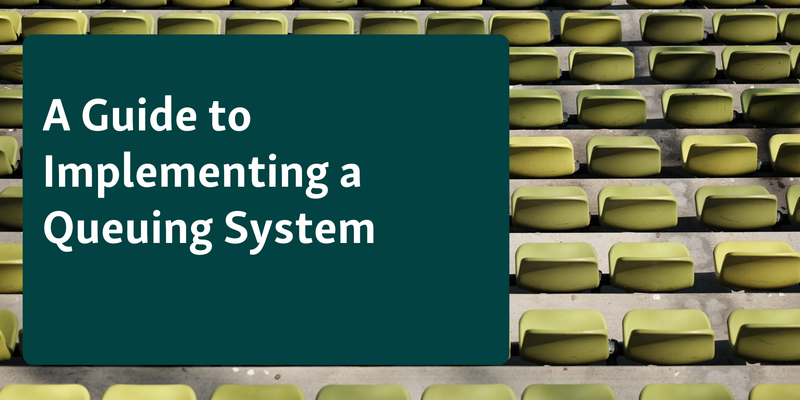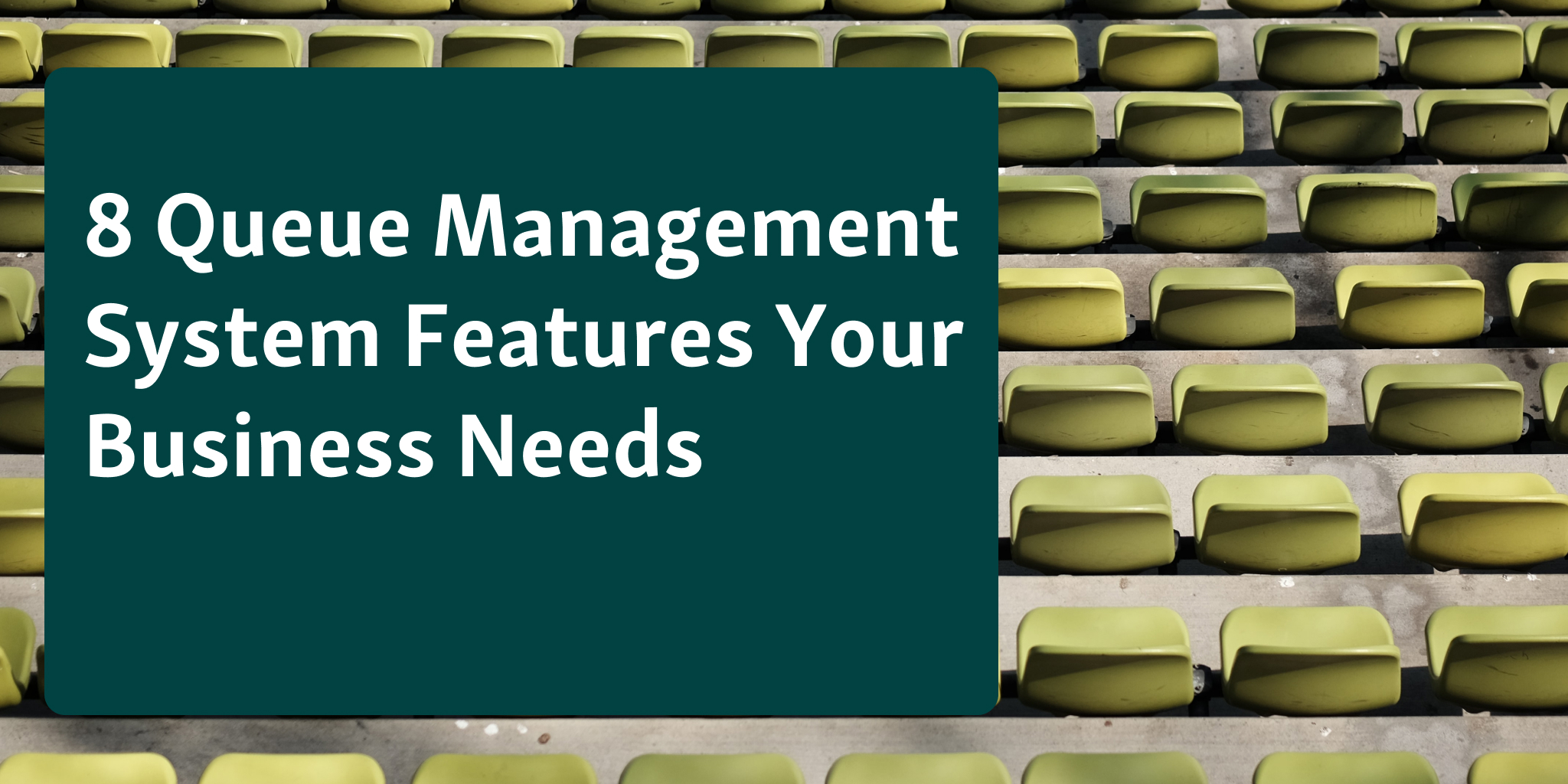Queue management systems have become increasingly popular recently as businesses of all sizes and industries strive to deliver the best customer experience possible. From retail stores to government offices, queuing apps can help reduce wait times, increase efficiency, and improve customer satisfaction.
This guide will provide an overview of the components of a queue management system and the steps required for successful implementation. We'll discuss the types of queue management systems available, their benefits and drawbacks, and the steps required for successful a implementation.
Whether you're just getting started or already have an existing system, this guide will provide the tools you need to ensure your queue management system runs smoothly.
Bonus: List of 15 Best Queuing Software
What is a Queue Management System?
A queue management system is a tool that helps businesses manage customer flow and wait times. It allows businesses to create queues, assign tasks to team members, and track customer wait times.
The first step in successfully implementing a queue management system is understanding the components that make up the system. Queue management systems usually consist of a physical queue (such as a line of people waiting for service), an interface for customers to interact with the system (such as a check-in kiosk, a mobile app, or a website), and a back-end system to track customer data. To succeed, businesses must ensure that the system is well-integrated and easy to use.
4 types of Queue Management Systems
Queue management systems come in a variety of shapes and sizes.
Usually, the need for a queue management solution arises when waiting areas become crowded, which results in confused and unhappy customers. Many visitors are okay with waiting when the queue is organized, and they're informed about waiting times.
Queueing solutions come in many forms, but these are the four most common types of queuing systems:
The most basic queue management solution is to have a receptionist who greets visitors, asks about the reason for their visit, and directs them to the appropriate clerk or counter. At the same time, this simple and cost-effective solution can result in long wait times, especially during peak hours. Additionally, the effectiveness of this solution is heavily dependent on the receptionist's skills, efficiency, and ability to manage the queue effectively. Businesses can implement best practices such as training receptionists to handle difficult visitors, providing clear signage and instructions, and creating a comfortable waiting area. Nonetheless, this solution has limitations, and for businesses with larger volumes of visitors, it may be necessary to explore more sophisticated options.
A simple ticket queue system is an improvement over the receptionist model, as it gives visitors a tangible indicator of their place in line. This solution is easy to implement and requires minimal training or setup. However, the take-a-number machine solution cannot track wait times and queue lengths, leading to a frustrating visitor experience. Furthermore, the take-a-number dispenser used in this system requires regular maintenance and servicing by a technician, which can be time-consuming and costly. Businesses that opt for this ticket queue solution should invest in high-quality printers and ensure they have a service agreement to minimize downtime.
Check-in kiosk systems represent a significant upgrade from take-a-number systems. Visitors can check in and receive information without human interaction, leading to faster service times and a better visitor experience. These kiosks are handy for businesses with high volumes of visitors or where privacy is important, such as healthcare providers. However, the custom hardware and software required for this system can be expensive and difficult to maintain. The initial setup and installation can be complex and time-consuming, and it may require trained technicians to complete the installation. The best way to implement check-in kiosks is via virtual queuing software which usually has minimum hardware requirements.
Virtual queuing software is the most advanced option available. This solution is accessible from any device with an internet connection, making it convenient for both visitors and staff. They offer businesses a range of features and benefits, including service analytics like real-time data on queue lengths and wait times, multiple check-in options, and easy integration with other software. With web-based solutions, you can choose to greet visitors with a check-in kiosk Ipad, use a QR code, or a receptionist too, if you prefer. They are often more cost-effective than custom hardware solutions, requiring minimal maintenance and upgrades. Businesses that opt for this solution should consider their security protocols and implement software with essential data security compliances. They should also select a provider offering reliable technical support and training to ensure optimal performance.
Steps for Implementing a Queue Management System
Implementing a queue management system can be lengthy, but it doesn't have to be complicated. To ensure a successful implementation, businesses should follow a few key steps:
Start by determining the type of system that best suits your business needs. This requires considering several factors, such as the size of the customer base, the nature of the services, and the budget available for the system. By carefully evaluating these factors, businesses can make an informed decision about the type of queue management system features most appropriate for their requirements.
Once you decide on your system, the setup and onboarding process is next. This will involve setting up the system, assigning tasks to team members, and training the team members to use the system effectively. Configuring the system to meet the business's unique needs is also important, as this will ensure that the system is optimally designed to support the business's specific operations.
The next step is to connect the system to the business's existing systems and to test that the system is functioning correctly. This will involve ensuring that the waitlist app is properly integrated with other software applications and verifying that it is compatible with the business's hardware and network infrastructure. Thorough system testing is essential to identify and address any issues before the system goes live.
Finally, it is crucial to monitor and maintain the system to ensure that the system runs smoothly over the long term. This will involve regularly tracking customer data to identify trends and patterns, troubleshooting any issues that arise, and optimizing the system to ensure that it runs efficiently. Managers can use the data collected by the system to identify areas for improvement and highlight best practices that can be shared across the organization. By continually monitoring and refining the system, businesses can ensure that it continues to deliver value to customers and the organization.
Speed of implementation
In the past, queue management systems necessitated the development of specialized software and hardware, resulting in a time-consuming setup process that could take months to complete. However, with the emergence of modern web-based solutions like Qminder, implementation can be accomplished in a matter of days. Many event organizers prefer Qminder as their go-to solution for managing queues.
Crowded waiting rooms and lengthy wait times hurt a business's bottom line. Thus, the quicker and more straightforward the system is to set up and use, the better. That is why Qminder is a popular choice. Its simple implementation enables businesses to improve their customer service rapidly and minimize wait times, resulting in increased customer satisfaction and loyalty.
In today's fast-paced world, customers demand prompt and efficient service, which is why it is critical to implement queue management systems quickly. With Qminder, businesses can achieve this goal without needing expensive hardware or custom software development.
Consider the costs of the system
Pricing is a critical consideration when purchasing a queue management solution. The cost of these systems varies depending on the features included, the size of the business, and the number of locations. Most queue management solutions offer different pricing tiers that cater to different business needs. The basic package usually offers standard features, while the more expensive packages offer more advanced features, such as analytics and reporting.
Choosing a pricing model that aligns with your business needs and budget is essential. Some queue management systems charge per location or user, while others charge a flat rate. Furthermore, businesses should look for solutions that offer flexibility, such as upgrading or downgrading their package as their business grows or changes.
One such solution that offers a web-based platform and unlimited locations for all its packages is Qminder. Qminder's pricing model is transparent, and they do not charge additional fees for extra locations. Businesses can choose a package that suits their requirements and pay only for the features they need. This can result in significant cost savings for businesses with multiple locations, as they do not need to pay separately for each location.
In addition to the cost savings, a web-based solution like Qminder provides many benefits, including easy implementation, scalability, and flexibility. The system can be set up quickly, and businesses can manage their queues from anywhere. With unlimited locations, companies can easily expand their queue management system as they grow without worrying about additional costs. In conclusion, businesses should consider a virtual queue management solution like Qminder that offers unlimited locations for all their packages to save money and improve customer service.


![The Ultimate Waiting Room Checklist: 65+ Ways to Enhance Your Space [PDF]](/static/img/cms-blog/9Nb3bvvnMqH4j9SnqQLtw/improve-waiting-room-checklist.png)



